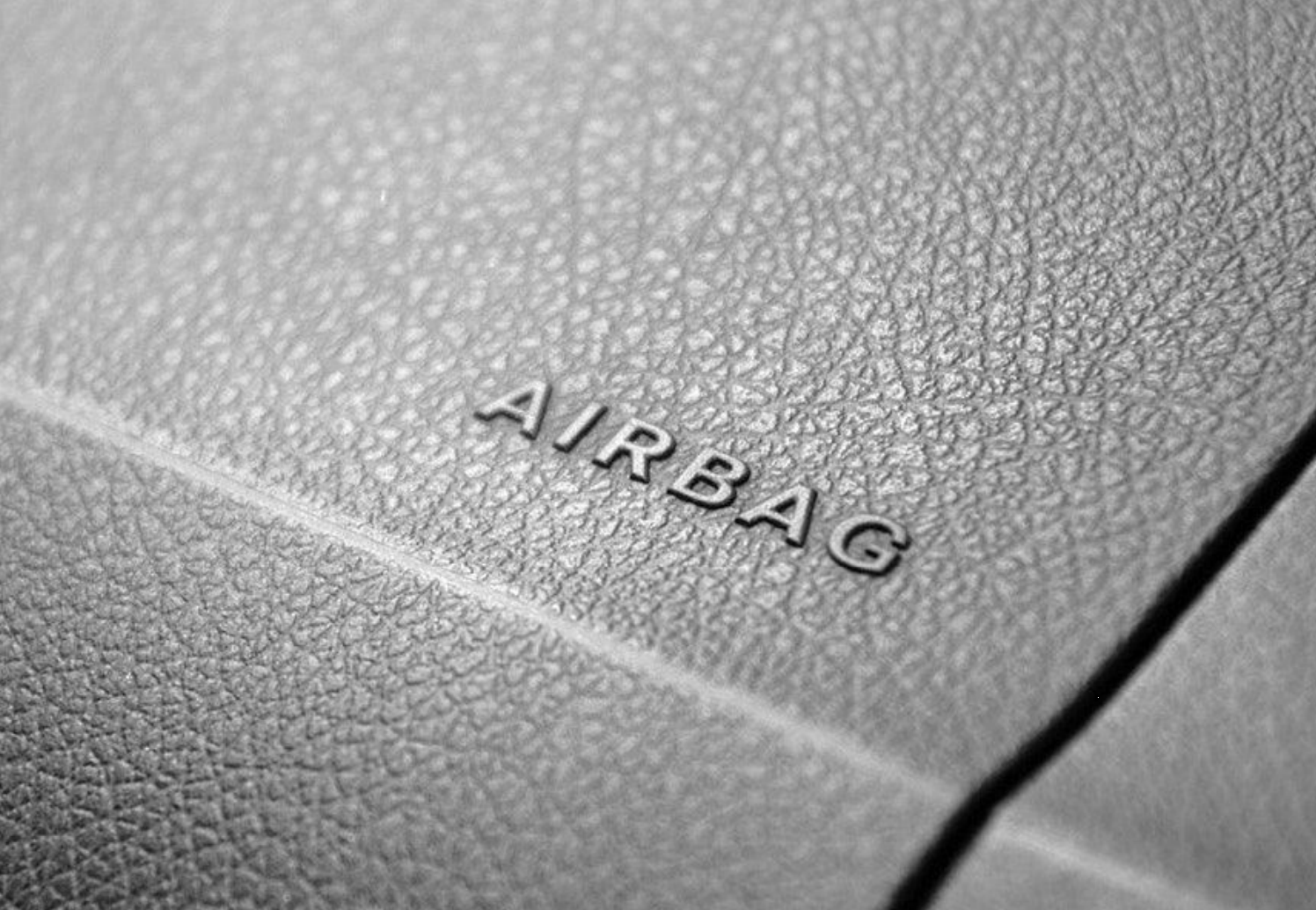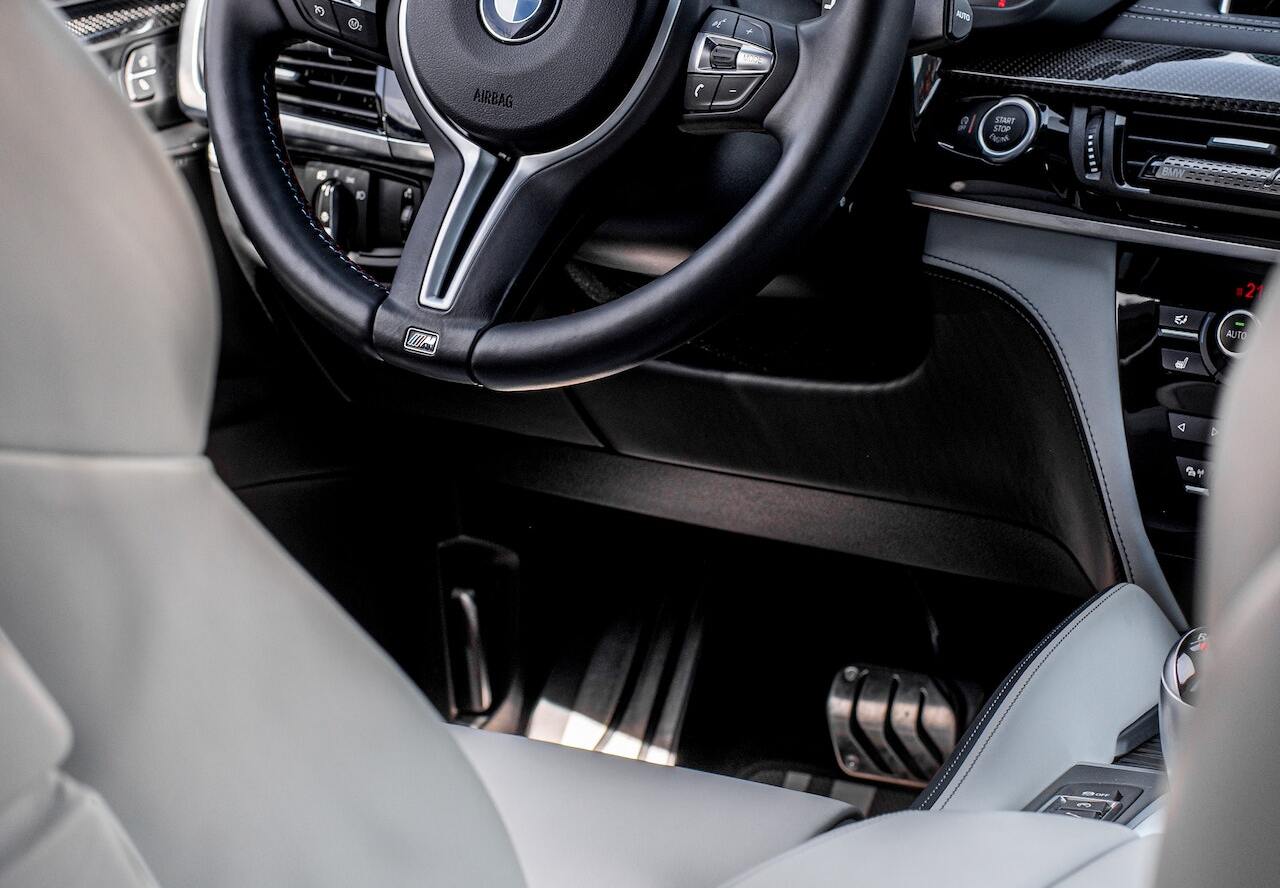The airbag system – for greater road safety
An airbag can contribute to the safety of the driver and passengers in motor vehicles on a scale. It is a cushion of air that deploys in the event of an impact, preventing the driver and passengers from colliding with the front of the vehicle. However, the airbag system does not just consist of the cushion itself; behind it is a sophisticated system of several components that are linked together. As early as the mid-70’s, the first airbag systems for drivers were installed in luxury class vehicles. At the end of the 80’s, the airbag for front passengers was added. Gradually, the technology of the airbag system was further developed and several types of airbag were added. By now, the airbag is standard equipment in cars. In this article you will find general information about the functioning of the airbag system and its components.

How does an airbag function?
The activation of an airbag is based on the following principle:
1. Sensors measure an impact
When an airbag is triggered, several components of the airbag system are involved. During an impact, impact sensors or acceleration sensors measure an abrupt stop of the motor vehicle and transmit these signals to the airbag module. For example, in a side impact, so-called pressure sensors are used, which measure an abrupt increase in pressure at the side doors and transmit this information to the airbag module.
2. Airbag module evaluates signals and calculates the moment of activation
The airbag module processes all the important signals sent by the sensors and uses this information to determine the airbag activation strategy. This activation strategy calculates the time of impact, the impact velocity, the impact angle and the most favorable ignition time.
3. The airbag is activated
The gas generator delivers the required gas in just a few milliseconds, allowing the airbags to be triggered extremely quickly. Ignition of the gas generator takes place by an electrical signal from the airbag module.
Components of the airbag system
The following components are part of the airbag system. depending on the vehicle model and make, the components may differ:
Sensors
various sensors contribute to the operation of the airbag system: crash sensors, pressure sensors and seat occupancy sensors are distributed in the vehicle, measure an impact and transmit the signals to the airbag module.
Airbag module
At the heart of the airbag system, the transmitted information from the sensors is evaluated and analyzed. based on this data, the activation strategy is calculated.
Airbag / impact pad
The airbag itself is also called an impact cushion and consists of a highly durable, aging-resistant plastic. On the inside of the airbags, the impact cushion is held in the desired shape in the unfolding process. The gas for activating the airbag can escape through the rear discharge.
Belt tensioner
Like the airbag, the seatbelt tensioner is also part of a vehicle’s passive safety system. It is also triggered by the airbag module.
Airbag plug / airbag cabling
Airbag plugs and associated cabling are extremely important to ensure flawless activation of the airbag or seatbelt pretensioner, as they enable proper connection to the airbag module.
Slip ring
The slip ring is the connection piece between the steering column and the movable steering wheel. It makes the connection between the airbag module and the steering airbag.
Battery interrupter
In the event of an accident, the signal to disconnect the battery is also sent by the airbag module. disconnecting the battery reduces the risk of short circuits and resulting vehicle fires.
Roll bars (in convertibles)
In convertibles, roll bars are also part of the passive safety system. They protect the occupants when the vehicle overturns in a collision.
Different types of airbags for more safety
Since the first development of the steering airbag, technology has improved significantly and the airbag system has been expanded with additional features. Step by step, additional airbags were added to the car. Common airbags are listed below:
Front airbags
The front airbags include the so-called steering airbag or driver airbag, which is located in the steering wheel. The passenger airbag also belongs in this category and is found in the dashboard. In the event of a collision, the front airbags unfold within milliseconds, protecting the occupants’ upper body from the impact.
Side airbags
There is less material on the sides of a car than on the front and back. For this reason, many cars have side airbags that protect the chest, lungs and pelvis. The side airbags, which are often located in the side of the seat (and sometimes in the door and or back seat) help better protect occupants in the event of a side collision.
Headliner airbags
A headliner airbag is installed in the roof frame of a motor vehicle and protects the head and shoulders of the occupant. The headliner airbag is installed almost along the entire length of the roof. In the event of a collision, the headliner airbag deploys along the windows, primarily in a side collision but may also deploy in a frontal collision.
Knee airbag
The knee airbag is one of the newer airbags and is located in the lower part of the dashboard. in a frontal collision, the driver’s knees and legs are protected from serious injury. This knee airbag also provides support for a proper seating position, so the seat belt and front airbags can also provide effective protection.
Pedestrian airbag
Airbags are also used to increase pedestrian protection. When the pedestrian airbag is triggered, the hood is raised to absorb the impact of pedestrians.
Lifespan of an airbag
In general, an airbag does not have an expiration date. Only if the airbag indicator light comes on, a check should be performed. All repairs related to the airbag system should only be performed by authorized mechanics. If you have any questions or problems related to your airbag, please contact us or fill out our troubleshooting form online.


